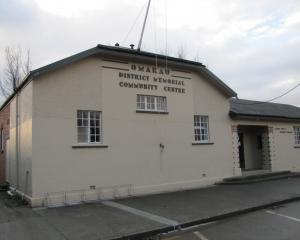Contact has suspended further salmon smolt releases in the Lower Clutha and is looking at options for a hatchery within the catchment.
The last release of 250,000 smolt, aimed at enhancing the salmon runs in that part of the river, cost about $300,000. Results from a recent survey showed the lowest success rate by anglers since surveys began six years ago.
Under the consent conditions for its Clutha hydro dams, Contact has to enhance the salmon fishery in the river. The Otago Fish & Game Council, meeting in Cromwell this week, criticised Contact for its lack of progress.
Council chief executive Niall Watson said getting salmon smolt from Canterbury and transporting them to the river was not a successful enhancement of the fishery. Local stock needed to be reared in local water. There had been no tangible progress, he said.
Cr Vicky Whyte said the Fish and Game Council had been "engaged" with Contact over the matter for six years: "can we marry them now".
Council chairman Monty Wright believed Contact was "stalling". He suggested raising the matter with the new councillors on the Otago Regional Council, which was the authority that had to ensure compliance with consent conditions. Fish and Game agreed to raise its concerns with the regional council, citing the lack of progress in any ‘‘meaningful’’ enhancement of the lower Clutha salmon runs. Approached for comment after the meeting, Contact’s head of hydro generation, Boyd Brinsdon, confirmed the smolt releases had been suspended for the coming year.
One option was to establish a hatchery with fish bred in the Clutha.
Stakeholders, including the Department of Conservation, Ngai Tahu and the Otago Regional Council, would be canvassed about the idea early in the new year, he said.
If it was approved, the project would have to go through the resource consent process. Contact had spent a significant amount of money on the smolt releases over four or five years. It did not want to continue if the exercise was unsuccessful and it needed to investigate the wider effect of the smolt release, in case it was detrimental on other the other river inhabitants.
"We need to know the science," he said.
He could "understand the frustrations" of Fish and Game. Contact had released salmon smolt in the river over five or six years, starting with 30,000 and building up to the last release of 250,000.
"That’s another reason for taking a closer look at the science, we need to know if we’re spending that money wisely," Mr Brinsdon said.
A report from Fish and Game officer Helen Trotter outlined the latest survey of anglers on the lower Clutha. Interviews were done with 230 anglers.
"Despite some promising signs, particularly in the 2014 season, results from the past two seasons indicate that enhancement efforts have not resulted in any significant increase in salmon harvest, even with increasing numbers of salmon smolt released ... the number of salmon caught was significantly decreased and was the lowest reported harvest since surveys begun."
Survey
Lower Clutha salmon survey
• Seven years of data.
• Ten anglers (17%) were successful in catching at least one salmon this season — lowest success rate since surveys began.
• Successful anglers peaked at 50% in 2011, dropped to low of 17% this season.
• Most frequently fished sections of river — Roxburgh to the Roxburgh Dam wall, and Balclutha to the sea.
• About 40% of salmon caught between Roxburgh and Roxburgh Dam, weighing from under 1kg to 8kg.
• This season, most anglers made fewer than 10 visits and caught no salmon.
• Catch rate per visit varied from 0.12 in 2012 (eight visits for each salmon caught) to 0.02 (49 visits for each salmon caught) this season.












